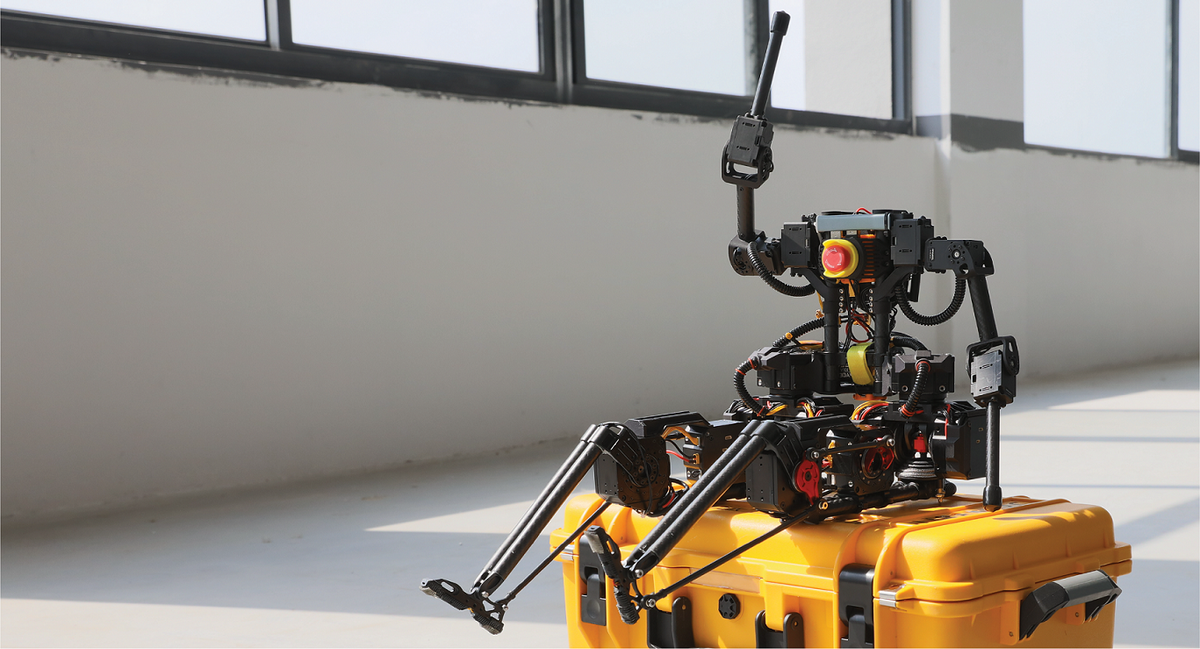Video Friday is your weekly selection of awesome robotics videos, collected by your friends at IEEE Spectrum robotics. We also post a weekly calendar of upcoming robotics events for the next few months. Please send us your events for inclusion.
ICRA 2023: 29 May–2 June 2023, LONDON
RoboCup 2023: 4–10 July 2023, BORDEAUX, FRANCE
RSS 2023: 10–14 July 2023, DAEGU, KOREA
IEEE RO-MAN 2023: 28–31 August 2023, BUSAN, KOREA
Enjoy today’s videos!
Following the great success of the miniature humanoid robot DARwIn-OP we have developed, RoMeLa is proud to introduce the next generation humanoid robot for research and education, BRUCE (Bipedal Robot Unit with Compliance Enhanced.) BRUCE is an open-platform humanoid robot that utilizes the BEAR proprioceptive actuators, enabling it to have stunning dynamic performance capabilities never before seen in this class of robots. Originally developed at RoMeLa in joint effort with Westwood Robotics, BRUCE will be made open source to the robotics community and also be made available via Westwood Robotics.
BRUCE has a total 16 DoF, is 70cm in height and weights only 4.8kg. With a 3000mAh lithium battery it can lasts for about 20 minutes with continuous dynamic motions. Besides its excellent dynamic performance, BRUCE is very robust and user-friendly, along with great compatibility and expandability. BRUCE makes humanoid robotics research efficient, safe and fun.
This video shows evoBOT, a dynamically stable and autonomous transport robot.
[ Fraunhofer IML ]
ASL Team wishes you all the best for 2023 :-)
[ ASL ]
Holidays are a magical time. But if you feel like our robot dog Marvin, the magic needs to catch up and find you. Keep your eyes and heart open for possibilities – jolliness is closer than you realize!
In this Christmas clip, the robots of a swarm transport Christmas decorations and they cooperate to carry the decorated tree. Each robot has enough strength to carry the decorations itself, however, no robot can carry the tree on its own. The solution: they carry the tree by working together!
[ Demiurge ]
Thanks David!
Our VoloDrone team clearly got the holiday feels in snowy Germany while sling load testing cargo – definitely a new way of disposing of a Christmas tree before the New Year.
[ Volocopter ]
What if we race three commercially available quadruped robots for a bit of fun...? Out of the box configuration, ‘full sticks forward’ on the remotes on flat ground. Hope you enjoy the results ;-)
[ CSIRO Data61 ]
Happy Holidays From Veo!
[ Veo ]
In ETH Zurich’s Soft Robotics Lab, a white robot hand reaches for a beer can, lifts it up and moves it to a glass at the other end of the table. There, the hand carefully tilts the can to the right and pours the sparkling, gold-coloured liquid into the glass without spilling it. Cheers!
[ SRL ]
Bingo (aka Santa) found herself a new sleigh! All of us at CSIRO’s Data61 Robotics and Autonomous Systems Group wish everyone a Merry Christmas and Happy Holidays!
[ CSIRO Data61 ]
From 2020, a horse-inspired walking robot.
Landing an unmanned aerial vehicle (UAV) on top of an unmanned surface vehicle (USV) in harsh open waters is a challenging problem, owing to forces that can damage the UAV due to a severe roll and/or pitch angle of the USV during touchdown. To tackle this, we propose a novel model predictive control (MPC) approach enabling a UAV to land autonomously on a USV in these harsh conditions.
[ MRS CTU ]
GITAI has a fancy new office in Los Angeles that they’re filling with space robots.
[ GITAI ]
This Maryland Robotics Center seminar is from CMU’s Vickie Webster-Wood: “It’s Alive! Bioinspired and biohybrid approaches towards life-like and living robots.”
In this talk, I will share efforts from my group in our two primary research thrusts: Bioinspired robotics, and biohybrid robotics. By using neuromechanical models and bioinspired robots as tools for basic research we are developing new models of how animals achieve multifunctional, adaptable behaviors. Building on our understanding of animal systems and living tissues, our research in biohybrid robotics is enabling new approaches toward the creation of autonomous biodegradable living robots. Such robotic systems have future applications in medicine, search and rescue, and environmental monitoring of sensitive environments (e.g., coral reefs).
[ UMD ]
Evan Ackerman is a senior editor at IEEE Spectrum. Since 2007, he has written over 6,000 articles on robotics and technology. He has a degree in Martian geology and is excellent at playing bagpipes.



